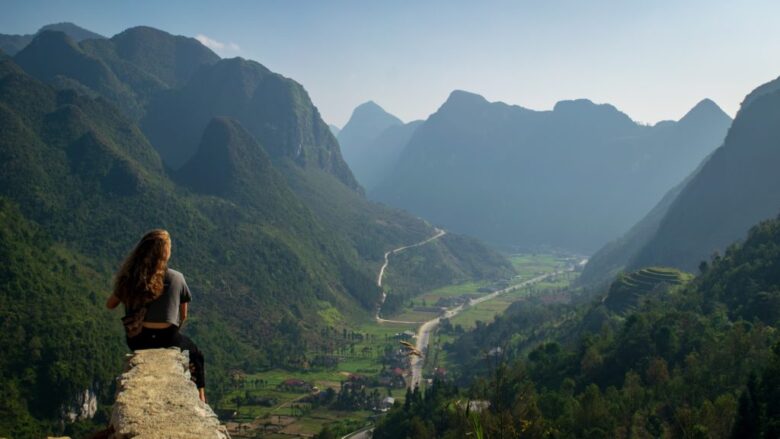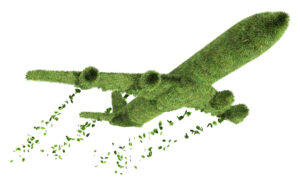The tourism industry must achieve a balance between the desire to travel and environmental awareness. While millions of people enjoy traveling, the carbon footprint of traditional tourism is a concern for climate scientists and environmentalists worldwide. Slow travel is changing the way conscious travelers see the world. This movement strives to develop meaningful connections with places and people while reducing environmental impact and enjoying relaxing moments.
Slow travel appeals to adventurers who locate it difficult to choose between exploration and environmental protection. Longer stays, local transportation, and engaging experiences enrich the travel experience and promote sustainable tourism. This comprehensive guide explains how slow travel is the ideal eco-friendly adventure, with environmental benefits unmatched by conventional travel and transforming personal experiences.
What is Slow Travel?
Slow travel is a philosophical shift from “seeing everything quickly” to thoughtful, immersive exploration. This travel philosophy emphasizes quality over quantity and encourages travelers to stay in one place for weeks or months at a time instead of taking short vacations to countless destinations. The Slow Food movement inspired the concept of valuing local experiences over mass-marketed tourist attractions.
Slow travelers prefer to travel overland, stay in local hotels, meet local people, and fully experience the culture of the community. This approach significantly extends trip duration and reduces the frequency of long-haul flights, making travel more sustainable. Digital nomads, retirees, and conscious travelers who understand that meaningful travel experiences take time are embracing this trend.
The Environmental Impact of Traditional Tourism:
Recent studies indicate that traditional tourism is responsible for 8% of global greenhouse gas emissions. The airline industry, with recreational tourism as the largest contributor, emits 2.5% of global CO₂ emissions. Overtourism leads to environmental degradation, water shortages, and waste crises, putting pressure on local ecosystems and infrastructure.
Due to the environmental and social impact of tourist numbers, Venice, Santorini, and Barcelona have all implemented visitor limits. The “bucket list” mentality encourages people to visit as many destinations as possible in a short time, increasing demand for long-haul flights and the environmental impact of the aviation industry. The rapid flow of tourists to popular destinations often benefits international hotel chains and tour operators rather than local residents.
Why Slow Travel Is Greener:
Slow travel addresses the key shortcomings of traditional tourism and significantly reduces its environmental impact. The biggest benefit is the reduction of aircraft emissions by flying less frequently and taking longer trips instead of frequent short breaks. Slow flyers optimize their environmental efficiency by staying longer at their destination, improving the ratio of emissions to experiences. Slow travelers can enjoy scenic train routes, bus tours, and even cycling or walking to and from nearby locations, making ground transportation more attractive.
Smaller, community-focused hotels stimulate the local economy and have a lower environmental impact than large multinationals. Slow travel supports local consumption, such as shopping at neighborhood markets and dining in family-run restaurants, instead of relying on resource-intensive tourist facilities. This technique reduces daily environmental impact by immersing passengers in the local lifestyle instead of the high costs of short trips.
Benefits of Slow Travel:
Slow travel offers significant personal and cultural benefits, enhances the travel experience, and promotes the growth of sustainable tourism. Longer stays allow travelers to immerse themselves in local culture and make valuable connections. Language learning becomes engaging and practical when travelers can practice with native speakers. Slow travel can sometimes surprise novice travelers, as longer stays can save on weekly or monthly accommodation costs, and fewer flights can make long-term travel more affordable than traditional vacations.
Slow travel can improve mental health by reducing the stress of packing, exploring new places, and planning routes. Compared to more meticulous travelers, slow travelers have more time to analyze and appreciate their experiences, resulting in greater satisfaction and more vivid memories. Longer trips can also lead to freelance work, volunteer opportunities, or skill sharing, all of which benefit the local community.
Tips for Planning Slow Travel:
Slow travel requires careful planning, with flexibility and sustainability prioritized over rigid itineraries. Choose countries that offer 90-day tourist visas or digital nomad visas for remote workers. Research transportation options for getting around in advance, as train and bus routes may require reservations and affect your trip planning. Local guesthouses, resident-rented apartments, and house-sitting services can offer authentic experiences and boost the local economy.
Because you’ll have time to shop for locally produced goods and may not need specialized equipment for every activity, pack lighter than usual and focus on versatile clothing and essentials. Allow time, as the greatest benefit of slow travel lies in discovering unexpected opportunities and spontaneous excursions in your favorite areas. Consider seasonality, as longer stays can emphasize weather patterns and allow you to visit attractions in different seasons. Budget generously for visa extensions, healthcare, and the local experiences you can gain during longer trips.
The Perfect Destinations for Slow Travel:
Some destinations are ideal for slow travel due to their infrastructure, culture, and location. Thailand, Vietnam, and Indonesia have become popular slow travel destinations due to their low cost of living, convenient land transport, and culturally inclusive nature for long-term travelers. Europe’s extensive rail network allows travelers to explore countless countries without flying, enjoying efficient and comfortable transportation and experiencing diverse cultures and landscapes.
South America’s rich geographical diversity and the bus network from Colombia to Argentina attract slow travelers, but journeys are long and infrastructure is poor. Portugal, Estonia, and Barbados offer digital nomad programs and infrastructure for long-term travelers. Slow travel is best suited to rural and mountainous areas, where the pace of life aligns with the slow travel philosophy and offers opportunities for hiking, cultural interaction, and agritourism. In New Zealand, Sri Lanka, and Madagascar, slow travelers can explore a variety of microclimates and ecosystems that require in-depth exploration.
Conclusion:
Slow travel is more than a trend—it’s a rethinking of how to travel ethically and create meaningful experiences. This approach to travel recognizes that environmental awareness and a spirit of adventure are complementary components of thoughtful exploration. Slow travel demonstrates that limiting our environmental impact doesn’t have to mean sacrificing the joy of discovery; it can enhance the travel experience by deepening our connections with places and people.
As concerns about climate change rise and overtourism puts pressure on major attractions, slow travel is a practical approach that individual travelers can implement immediately. Slow travel supports the growth of sustainable tourism and protects places for future generations, not just for personal experiences. Travelers who explore with this thoughtful attitude will actively participate in building a more sustainable future for global tourism, recognizing that the most fulfilling adventures often arise when we slow down and truly savor them.
FAQs:
1. How long should slow travel last?
Slow travel trips typically last from three weeks to several months, with experienced slow travelers spending 1-3 months in each destination. A minimum stay of 2–3 weeks in an area is essential to going beyond tourist activities and immersing yourself in local customs.
2. Is slow travel pricier?
Slow travel can be less expensive than traditional travel because it saves on monthly accommodation costs, reduces transportation expenses, allows meals to be prepared or eaten locally, and also eliminates tourist taxes.
3. What if my working holiday is limited?
Slow travel can be applied to shorter trips, choosing easily accessible destinations, staying in one location, and focusing on local experiences rather than visiting just a few attractions or cities.
4. How do I handle visa requirements for extended stays?
Investigate countries with long-stay tourist visas, visa-free visas, or digital nomad visas early on. Slow travelers use visas or visa extensions to visit neighboring countries, but the specific criteria vary by nationality and destination.
5. What about slow travelers with children?
Slow travelers are suitable for families because children can more easily adjust to long stays and enjoy a stable routine while experiencing different cultures. Slow travelers with families choose house sitting, apartments, or spacious and comfortable accommodations for extended stays.




